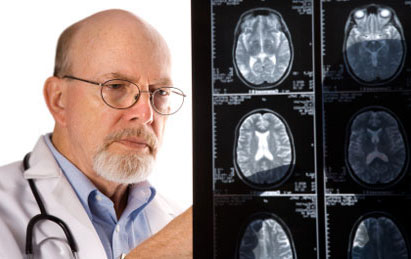Tests and Diagnosis of Stroke
Timely diagnosis can reliably determine the type of stroke and help ensure proper treatment, which increases the chances of the patient for full recovery considerably, and reduces the risk of death from stroke.
Examination by a doctor can be helpful in diagnosing the nature of a stroke only in 70% of cases; therefore, additional tests are necessary, including:
- Blood tests provide valuable information about the speed of blood coagulation, the level of sugar in blood, infections if any, and the levels of the main chemical parameters of blood, which are extremely valuable in determining treatment options;
- Computed Tomography makes it possible to determine the area of the cerebral infarction as well as to clarify many consequences of stroke. Sometimes the injection of a contrast agent may be required in order to locate lesions. Computed Tomography is usually administered within a few hours following the onset of a stroke;
- Ultrasound imaging of the brain arteries is done to determine the velocity and nature of the blood flow, which aids in assessing the condition of the carotid arteries. Transcranial Doppler imaging is used to evaluate the blood flow in the arteries;
- Cerebral angiography is a modern informative diagnostic procedure used to detect an aneurysm or other vascular changes that may be the cause of ischemic stroke. It is worth noting that this procedure is carried out only if approved by a cardiologist because in the acute phase of a stroke the procedure may increase the risk of serious complications;
- Electrocardiogram is used to detect or eliminate the presence of the accompanying pathologies of the cardiovascular system. It can also be required to perform Holter monitoring (ECG monitoring during 24 hours);
- Magnetic Resonance Imaging detects damaged parts of the brain as well as any other ischemic changes in the brain of the patient, including the areas of the luminal narrowing of the arteries;
- Detailed chest X-ray may be required to eliminate pulmonary embolism in stroke patients.
Next chapter: Treatment and Prevention
Featured Articles
A stroke can cause problems with communication if there is damage to the parts of the brain responsi ...
People with irregular bowel movements often complain about elevated blood pressure that doesn’ ...
A mini-stroke is a temporary disruption in blood flow to the brain, spinal cord or retina that doesn ...
It is well known that rheumatoid arthritis is an auto-immune disease that primarily affects joints. ...









